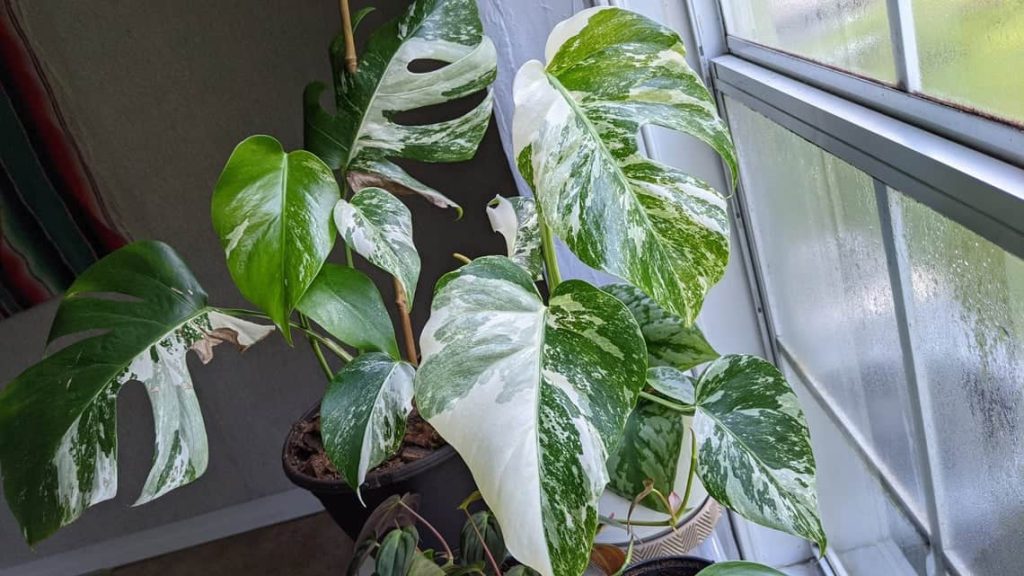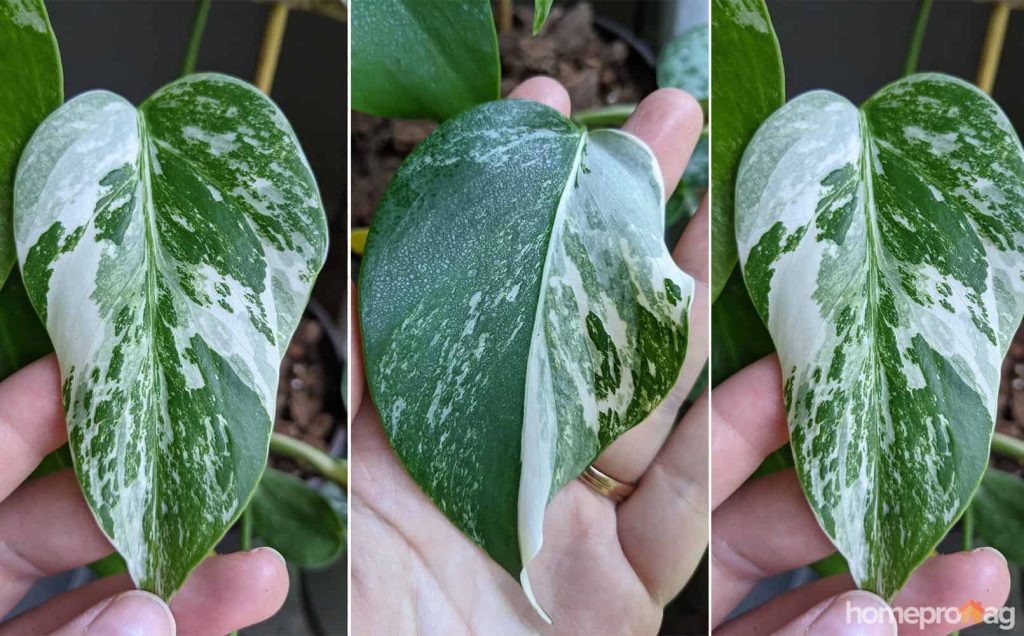Plants in the monstera family are popular houseplants known and grown from their beautiful and distinct foliage. The large-holed leaves make it very easy to identify the plants in this family. Because of their beauty, there has been a trend of people seeking to grow this plant indoors.
Although plants in this family are quite easy to grow, not all of the varieties can be found. In this article, we will be exploring one of the popular species in the monstera family– the monstera borsigiana.
Monstera borsigiana is often mistaken for the deliciosa, they are also both called the swiss cheese plant so don’t feel bad if you mistake one for another. The difference in the monstera borsigiana is that it has smaller leaves than the deliciosa.
Another difference that might interest you is that monstera borsigiana is a fast-growing plant. Apart from finding the monstera borsigiana easy to grow, we are delighted to inform you that you will also find it easy to propagate. What more do you desire? Find out the best care guide and propagation methods for monstera borsigiana below.
Monstera Borsigiana Explained
| Common name | Swiss cheese plant |
| Botanical name | Monstera borsigiana |
| Plant type | Flowering plant |
| Soil type | Well-drained |
| Soil Ph | 5.5 to 6.5 |
| Light | Bright, indirect light |
| Water | Moderately watered |
| Temperature | 15 to 25 degrees C |
| Toxicity | Toxic |
| Native | Panama and South America. |
The monstera borsigiana is native of Panama and southern Mexico, it is from the Araceae family and the genus monstera. The plant is characterized by its beautiful, evergreen holed leaves that grow to about 1.3 feet.
Borsigiana is often referred to as a Swiss cheese plant, similar to monstera deliciosa. It is a flowering plant in its natural habitat however it rarely flowers indoors. The monstera borsigiana will grow healthily when provided with the right care.
Monstera Borsigiana Plant Propagation Methods
Propagating monstera borsigiana is an easy task to perform. Now you can grow your plant and have baby plants to grow as well and probably sell. There are two methods by which you can propagate your borsigiana. Both methods are easy to perform; however, you might want to try both to decide which one you love best. The two methods are stem cutting and division. All the details you need to successfully propagate are below.
Monstera Borsigiana Propagation via Stem cutting
- Select a healthy and mature plant. With the use of a clean, sharp knife or pruning shears, make some cutting from the mother plant.
- Make sure your cutting from the mother plant is right below a node.
- Prepare a pot of quality potting soil and place your cutting into the soil.
- Keep the pot in a warm, sunny place and water frequently. In 3 to 6 weeks, your plant will develop its rooting system.
This method can be done in water. Simply place your cutting in water and place it in a warm place. You will be required to change the water every few days. In 3 to 6 weeks, your plant will develop roots. It can then be moved to its pot of soil.
Monstera Borsigiana Propagation via Division
- If you have a large plant or your plant has gotten too big for its pot, we recommend you propagate via this method.
- Carefully get your plant out of its pot and let it lay on its side.
- Shake off the earth that already joined to the plants’ root, however, do these carefully so you do not lose the roots as well.
- With the use of a knife or shears, cut the roots into two or more (this is dependent on how big your plant is).
- Once the separation is done, re-pot each plant into separate pots of soil. Water the plants and place them in a bright, warm place.
Monstera Borsigiana Care Guide
The best guide has been provided to help you have a smooth sail while planting. Although we admit that the borsigiana species is an easy one to grow, however, they must be not neglected and are provided the best care.
1. Light
Similar to many other plants in the monstera family. The borsigiana will prefer bright, indirect light. Be reminded that it requires 6 hours of this kind of light; hence you might want to place it by a window where it will get access to this.
If for any reason, you cannot get access to bright light, you can expose your plant to morning light and keep it in partial shade afterward. Exposure to direct light will hinder your plant’s growth, keeping them in shade will also affect their growth. They want balance.
2. Water
Let us begin by saying that the monstera plant hates over-watering, and this does not exclude the borsigiana species. It is safe to say that the monstera borsigiana clamors for balance when water is concerned.
Water the plant thoroughly and let it drain, after that, wait until the top 2-inch soil is dry before you water it again the same way. This can equal watering once or twice a week.
The watering schedule, however, has to change during the winter. It is best to cut down on the water provided for your plant during this season.

3. Soil
The soil of your plant will affect how healthily your plant grows. The monstera borsigiana prefers a slightly acidic soil mix, pH ranging from 5.5 to 6.5. For best growth, you can provide your plant with a mix of compost, peat moss, and perlite.
All of these are to ensure your soil drains well and also retains adequate moisture for your plant. This also involves getting the right type of pot, as the soil will not drain if there are no drainage holes in the pot.
4. Temperature
Your plant’s growth will be hindered if it is placed at the wrong temperature. The ideal temperature for your borsigiana is between 15 degrees C to 25 degrees C. Keep them away from AC vent and other heating systems. They also do not do well with a draft or sudden temperature change.
5. Humidity
For a tropical plant like the monstera borsigiana, moderate to a high level of humidity is required. We recommend that your plant is placed in rooms with high humidity, such as the kitchen or bathroom.
If you live in a dry environment or your indoor humidity isn’t enough, you can increase the humidity for your plants by placing your plant on a peddle tray, or purchasing a plant humidifier. You can also mist your plant regularly to boost the humidity.
6. Fertilizer
Fertilizing your plant is a good idea, especially during the growing seasons, however, the fertilizer must be mild or diluted, to prevent harm. We recommend that you reduce fertilizing during winter. You must choose a fertilizer that is organic and rich in nitrogen and other beneficial nutrients, it should also be liquid. Refrain from fertilizing in autumn too.
Frequently Asked Questions
Does Monstera Borsigiana Clean The Air?
Yes! Monstera plants are known to possess purifying properties, and this includes the borsigiana. They get rid of harmful substances in the air and they make the home healthier. This means that you not only beautify your home with a borsigiana plant, you also keep your home healthy.
Can Monstera Borsigiana Grow In Water?
Yes, the monstera borsigiana can live and grow in water; however, we might not fully recommend this. This is because that is not their natural environment and they will struggle to grow. It will also be stressful for you as you will need to fertilize and change the water often.
Is Monstera Borsigiana Toxic To Pets And People?
Yes, monstera borsigiana and all monstera plants are toxic to both pets and humans. Although it is said that the borsigiana is only toxic in its natural environment, and not as a houseplant, we recommend that precautions are taken and the plant is kept from the reach of pets and children.
What Is The Difference Between Monstera Borsigiana And Monstera Deliciosa?
A lot of people regard the monstera borsigiana as subspecies of the deliciosa. Regardless of this, the two plants are similar and one way to identify differences is the size. The monstera deliciosa is bigger and larger than the monstera borsigiana. The borsigiana species is also a fast-growing plant, while deliciosa is not.
What Happens When My Plant Develops Yellow Leaves?
Yellow leaves are a common indication when your plant has either been receiving too much light or has been overwatered. We recommend that you check your light and water care routine to determine where the problem lies. If the lighting is the problem, bring your plant into a dark room and let it rest. If overwatering is the problem, we advise that your plant be allowed to dry completely before you water it again. Your plant will be healthy once this has been adjusted.
Why Is My Monstera Plant Without Holes?
Monstera plants are characterized by their holes; hence we understand how you must feel. If your plant is young, then you should be patient as it will bring forth these holes in due time. If your plant is matured, then your plant is not exposed to proper light. Be reminded that your monstera ought to receive a minimum of 6 hours of indirect light, daily.
Why Are The Leaves Dusty?
Borsigiana leaves are prone to getting dusty; you do not have to worry so much. We recommend that you clean your plant as often as possible.
Final Thoughts
Caring for the plant is stress-free as long as you follow the right guide. The following tips below will answer some other questions you might have.
- Pests such as fungus gnats, spider mites may infest your plant. The good news is that you can easily get them off by using neem oil or by washing your plant leaves.
- Re-potting your borsigiana will help your plant grow healthy. We recommend that you do this once every two years. The best time to do this is early spring, before entering the growing season.
- Borsigiana monstera can grow tall and fast, pruning is required to keep it in shape and healthy. Remove dead and diseased leaves to give your plant a healthy and fuller look.
- It is not uncommon that monstera plants can get affected by water diseases. We strongly advise that you observe your plant’s watering need and provide water for it according to this. Remember your borsigiana wants balance.
Having a Borsigiana in your home not only makes your space beautiful but also keeps it healthy and keeps the air clean and fresh. We think it’ll make an excellent addition to your home.

